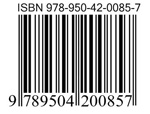
22/05/2008 - Press release
Press release by GA2LEN

In a paper published in the Journal of the American Medical Associations (JAMA) this week, European scientists propose applying a structured numeric identifier to studies involving human biological samples collected for DNA. This would allow optimised use of biological resources through increased traceability and open new perspectives for genetics studies.
Tracing biological collections, or biobanks, is crucial for genetic studies of all diseases, since using larger and larger collections is becoming the gold standard of new genetics study designs. Networking between research teams is essential but also raises numerous ethical issues for the scientists who collect and analyse the samples, as well as for the individuals who take part in clinical trials.
In their publication, scientists from several EU projects, including GA²LEN and GEN2PHEN, in which participate the Centre for Research in Environmental Epidemiology (CREAL) and Fundació IMIM, propose a new identification system that could be applied to all studies, based on the model of the International Standard Book Number (ISBN) which has been used for books for more than forty years. Each study would receive a modular number with a universal structure, to be registered at the time of ethical approval. Such a number could be applied retroactively to existing studies and collections.
The number would have a variable length and would include elements needed to identify the study: a number for the country, a number for the name of the institution acting as custodian to the collection and a number for the collection itself. This system is transparent but also flexible: elements of a study could be identified as well, for example the various surveys in a longitudinal study. Each collection will receive its unique “indentity card” that can be referenced in any study using the collection.
The immediate advantages of a universal number would be to accelerate and stimulate exchanges between scientists, and potentially increase the size of data collections which were analysed for a given research question. The reference number would optimise the literature search and reviews. Moreover, it would allow scientists to link studies with their samples, the methods used, the results, and various scientific publications.
Genome Wide Associations (GWA) studies or meta-analyses often include data of large biobanks studies. A universal number would facilitate this process and enable the next step: to find, trace and include data of smaller studies with better characterised phenotypes and environments in the large studies. This could also include studies from other medical disciplines or collections initially gathered to study other diseases. Critical mass would be reached for statistical analysis without losing details of the disease characterisation.
Finally, this simple system could benefit all actors involved in the human biobank. Scientists could be identified in relation to a study and given credit for their methods and results in future studies using their collections Institutes who funded the study and/or who are custodian of the collection could be identified from the numeric identifier. Individuals and patients involved in the study with their informed consent would be given transparent access to the way the collection they contributed to has been used, while anonymity is preserved.
The proposal was discussed within the several EU-funded projects that supported the work, including GA²LEN, the Global Allergy and Asthma European Network, Genetic Work Package, and three projects focusing on biobanks and/or genetic databases: PHOEBE, Promoting Harmonization of Epidemiological Biobanks, GEN2PHEN, Genotype-to-Phenotype Databases and newly launched BBMRI, a Pan-European Biobanking and Biomolecular Resources Research infrastructure.
Notes
© Institut Hospital del Mar
d'Investigacions MèdiquesLegal Notice and Privacy Policy | Cookie Policy | Site Index | Accessibility | Find Us | Contact